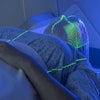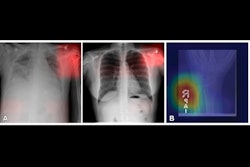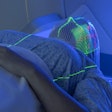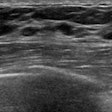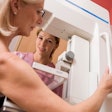Women in racial and ethnic minority backgrounds are less likely to be provided same-day diagnostic breast imaging services, despite such services being available, according to research published February 18 in Radiology.
A team led by Marissa Lawson, MD, from the University of Washington in Seattle also found that Black women are less likely to undergo same-day biopsy, even though this may be available at their breast facility.
"This information may prompt radiologists to consider how their current models of care delivery may impact patients’ access and use of diagnostic breast imaging services and how it may lead to differences in care across patient subgroups," Lawson told AuntMinnie.com.
Additional imaging and possibly image-guided biopsy are recommended for women who have an abnormal screening mammogram. But not every facility that offers screening mammography also offers diagnostic services, which can hinder efforts toward a definitive diagnosis and treatment.
Such availability can be affected by various socioeconomic factors, including those tied to individual patients, neighborhoods, and healthcare systems. Lawson and colleagues highlighted that understanding these differences in availability and receipt of diagnostic breast services could help guide interventions to reduce disparities in breast cancer care and outcomes.
The researchers identified multilevel factors associated with the availability of diagnostic services after an abnormal screening mammogram and women undergoing standard-of-care and advanced diagnostic services.
The study consisted of data collected between 2010 and 2020 from 136 facilities in the U.S. and included 1.1 million women between the ages of 40 to 89 years -- all of whom underwent screening mammography -- as well as a total of 3.5 million screening mammograms.
The study population was represented by the following races and ethnicities: white (68.3%), Black (12.7%), Asian (10.3%), Hispanic (6.5%), and other (2.2%).
Although the team found that race or ethnicity and neighborhood-level socioeconomic status were not associated with on-site diagnostic service availability in most fully adjusted models, it did find that compared with white women, women belonging to racial and ethnic minority groups were less likely to undergo same-day diagnostic services after abnormal screening mammography.
| Likelihood of undergoing same-day diagnostic breast services after abnormal mammogram (measured by relative risk) | |
|---|---|
| Patient population | Relative risk |
| White | N/A (standard) |
| Asian | 0.74 |
| Hispanic | 0.61 |
| Black | 0.56 |
Finally, Black women were less likely to undergo same-day biopsies after an abnormal diagnostic workup (relative risk, 0.46; p < 0.001). And women identifying as Asian or Black were less likely to receive diagnostic evaluations with digital breast tomosynthesis (DBT) within 90 days of their screening exams.
Lawson said that a multilevel approach is likely necessary to mitigate these disparities.
"For example, at the policy level, changes in health insurance coverage of diagnostic examinations may remove financial barriers that prevent timely completion of diagnostic breast imaging after an abnormal screen," she told AuntMinnie.com. "Facilities may also consider interventions such as dedicated team members that contact patients with results by telephone and help them schedule necessary appointments."
Lawson added that future studies will seek to better understand patient access to and use of diagnostic imaging, along with evaluating whether there are differences in the quality of diagnostic imaging provided to women.
"The quality of diagnostic imaging is important because failure to receive high-quality diagnostic imaging may lead to higher risk of missed cancers and delayed diagnoses," she said.
In an accompanying editorial, Lisa Mullen, MD, from Johns Hopkins University in Baltimore, MD agreed that while offering same-day diagnostic breast services has its advantages, it may be challenging for imaging centers by requiring a shift in mindset and workflow.
Still, she wrote that breast imaging centers should consider increasing the availability of these services and optimizing operational workflows to facilitate them.
“This includes patient and referring provider education, access to necessary examination orders, appropriate patient scheduling templates, adequate technologist and radiologist staffing to cover the uncertain volume of same-day patients, and assisting patients in their understanding of out-of-pocket costs and insurance coverage,” Mullen added.
The full study can be found here.
